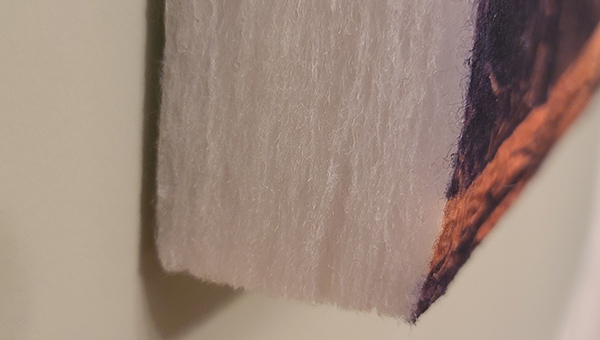Source of unwanted reflections
Mid-range and high frequencies reflect from hard surfaces such as plaster or plasterboard walls in a similar way that light reflects from a mirror. The effect is not quite as exact as with a mirror, as some of the sound energy is scattered, and a little is absorbed, but in simple terms you can think of hard walls as approximate acoustic mirrors. If you put a mirror alongside a light bulb, you see the light bulb itself and also its image in the mirror. Both act as real sources of light as far as you, the observer, are concerned.
The same thing happens if you stand a speaker close to a hard wall — a phantom sound source is created by the reflection, so now you hear sound from both the speaker and the wall. If you know which part of the wall is responsible for reflecting the phantom image to your mixing chair, then you can concentrate your acoustic treatment in that area. In fact, you can use a real mirror to find out where that spot is by getting a friend to hold the mirror up flat against the wall at different locations until you’re able to see an image of your loudspeaker from the mixing position. It’s for this reason that we often refer to these areas as the “mirror points”.
In a normal home studio setup (a rectangular room with a flat ceiling), there will be images on the side walls and ceiling between you and the speakers. Strictly speaking, there will also be one on the floor, but the chances are that this will be obscured by the desk holding your equipment. Clearly, we can also hear sounds from behind us, so the rear wall will also be a source of reflections, plus there will be reflections from the wall directly behind the speakers, and all these need to be considered when applying acoustic treatment.
Once you have identified the main reflection points, you can place treatment there to absorb the sound and kill the reflections. Bear in mind, though, that most people tend to move around a bit while recording and mixing, so the absorber panels need to be fairly large if they are to cover all possible reflection points as we move around.
Effective Absorbers and Reflections Control
Way to deal with high-frequency reflections is to break them up so that they become less disruptive. This is called “diffusion”, and requires a very uneven surface with protrusions and wells several inches in depth.
In a normal home studio, 2 x 4-foot acoustic panels are convenient to manage, and one panel would typically be fixed to each side wall at the mirror points, with a third at the ceiling mirror point if the ceiling were low enough to cause problems. The next step up from this would be to add further panels behind the monitors, as reflections from this area are potentially very confusing, given that they come from almost the same point in space as the speakers themselves. All these acoustic panels should be centered according to the engineer’s head height when he or she is in the monitoring position. Finally, the rear wall needs to be addressed, which is often best done by combining areas of absorption with areas of scattering.
